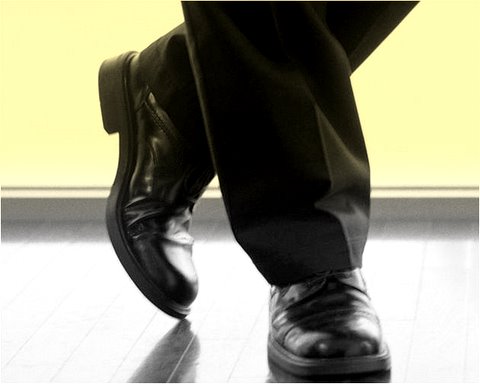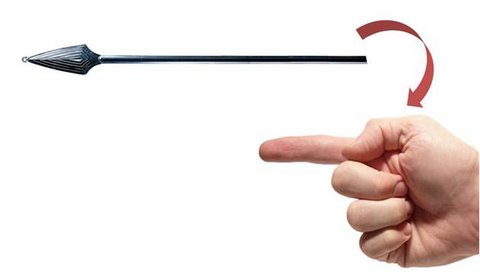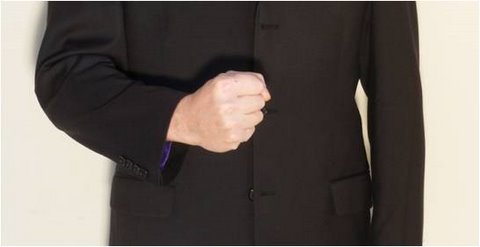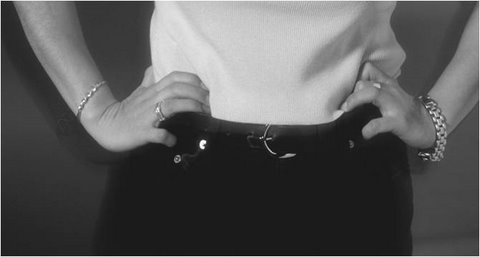Home > How to Present> Body Language
Are you unknowingly giving out negative signals with your body language? Are your gestures affecting the effectiveness of your communication? Learn the 7 blunders you should avoid as a presenter.
The way we are today…
Thousands of years of human evolution has refined the way we express ourselves. The words we use are cultured. Our manners are learnt. Our gestures are subdued. Yet deep inside us, we are still animals.
Our expressions are subdued
When we disagree or get impatient, we may feel like thumping and stomping on the ground to express disgust. But, in a meeting room we settle for a polite drumming on the table. When we are afraid, we may want to run away from the scene. But, if we are in a conference room, we just glance at the exit and turn our toes towards the door.
These subdued expressions of our inner emotions are called micro expressions. Most of the times, these expression may not last more than a few seconds or even milliseconds. Yet, as humans, we understand these expressions extremely well.
You may not be aware of your own microexpressions:
As a presenter you may not be able to understand all your expressions and their meaning, because of the level of subtlety that has crept into our communication. Here we list the 7 blunders you might be committing without your knowledge.
They all have their origins in our primal instinct as animals.
1: Stepping back while seeking a decision

If you are afraid of speaking in public, this could be a movement you make unconsciously.
To avoid this body language blunder,…
Next time you want to ask for business, take a step forward and ask with conviction. Your confidence will assure your audience and you’ll maximize your chances of getting a positive response.
2: Crossing your arms across your chest, when facing questions

When you use this gesture while facing your audience questions, you indicate lack of self confidence. Prepare for question and answer session and have a structure to handle tough questions.
Next time you answer a question…
When you answer a question, uncross your arms and answer with a smile. The same answer sounds so convincing with this simple alteration of body language.
3: Pointing fingers at audience

In the same way, waving your forefinger up and down indicates, “I want to beat you with a stick”.
Watch for bad habits…
You may be using these gestures out of habit. But, when you are on stage, these gestures may make your audience perceive a threat. Since verbal communication forms just 7% of your communication, your words may not be able to recover the damage caused by your gestures.
Are your presentations remarkable? Frustrated spending hours creating presentations that do not get the result you want?
We recommend the Powerful Presentations Skills Training Video. Learn how to make remarkable presentations step-by-step and at your convenience. Bonus get all slides with notes for your own training.
4: Punching motion

In the olden times, it was a classic warning signal to enemies. In a meeting room, displaying this body language triggers the defenses of your audience.
The same way, when you punch your fist in the air, it implies aggression. You may be punching an imaginary face in the air. But, the impact of that aggression takes a long time to die down in the minds of your audience.
Remember this…
By nature, we are a bunch of peace loving social animals. Any act of aggression unsettles us.
5: Pleading with your hands

The problem with this gesture…
You may be using the gesture to convey humility, but your audience may not perceive it that way. So avoid using this gesture.
6: Hands on your hips

The next time you present…
If you use this gesture during a question answer session, you will be seen as aggressive and unsympathetic. Unless your intention is to control an unruly audience, don’t stand with your hands on your hips.
7: Pacing restlessly when presenting

When you pace the room, your audience may find it difficult to process the information you put up on your slide. Your constant movement distracts their attention. Unless your movement has a specific purpose, restrain from pacing across the room or oscillating like a pendulum.
When you show a complex visual, stay put till your audience absorbs the information fully.
To understand your presentation body language:
Seek your friend’s help to record your next presentation (of course, the camera should be focused on you). Watch for the 7 negative body language blunders we discussed above. Practice alternate behavior where appropriate.
